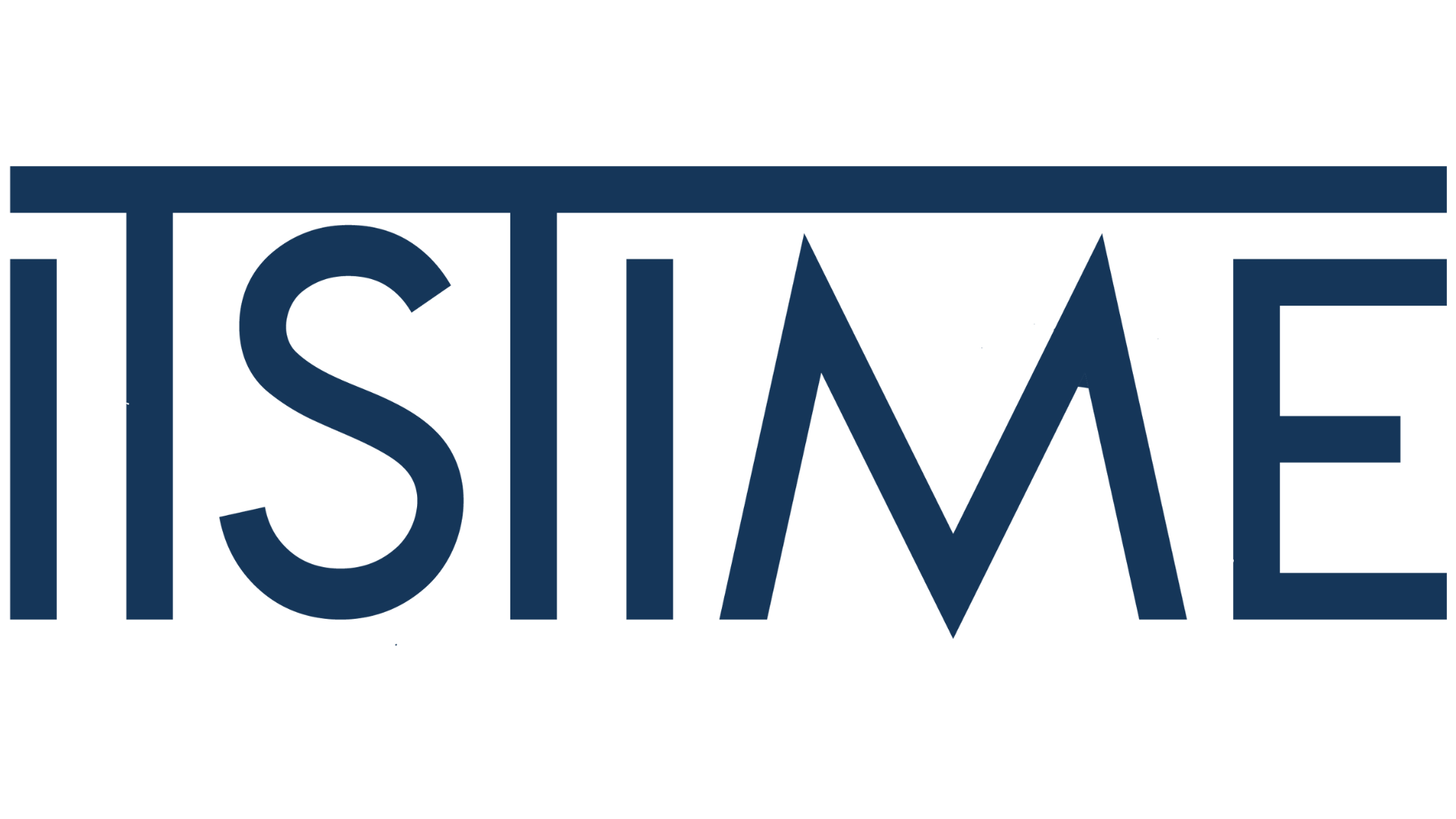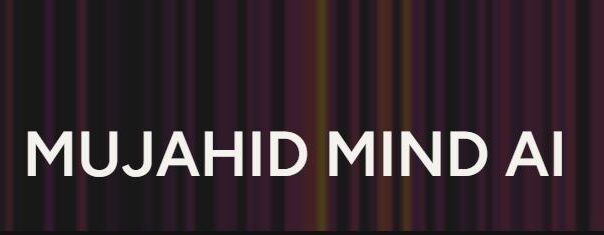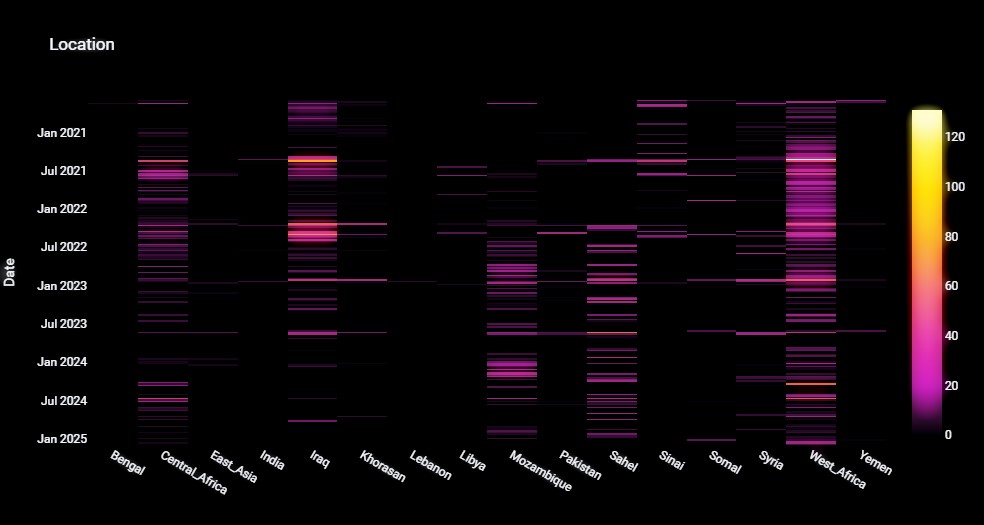The Nature of Salafi-Jihadi Communication: Salafi-Jihadi groups communicate based on deeply rooted theological principles. Their messaging has remained consistent over time, as evidenced by materials produced before and after major global events, such as the U.S. invasion of Afghanistan or Iraq that enabled the rise of AQ.
To counter their strategic communication effectively, it is essential to understand the core concepts and doctrinal frameworks they use to engage their primary tartget audience worldwide.
Empirical Insights from Mujahid Mind AI
Mujahid Mind AI analyzed over 6,600 images published between mid-2020 and early 2025. The findings reveal that, despite claims of their decline and defeat, the Islamic State (IS) continues to document its activities and engage with supporters through photo reports. This contradicts narratives suggesting IS has been incapacitated. Their communication remains active regardless of Western attention.
Further analysis demonstrates that IS communication focuses on a series of ‘authentic concepts’ This analysis also shows that IS consistently uses ‘authentic concepts’—ideas that have been central to IS, AQ and wider Salafi-Jihadi discourse for decades. By studying these long-standing themes, their messaging strategies can be identified and understood more effectively.
Core Themes in Salafi-Jihadi Media Strategy
Salafi-Jihadi groups frequently publish content that explains and justifies their actions through theological reasoning and doctrine. Their vast archives emphasize jihad, preparation, training, combat, andmental readiness alongside many aspects of Quranic study and worship.
Photo Reports as a Strategic Communication Tool
For over a decade, IS has used photo reports as a core part of its strategic communication. These images are not standalone—they are part of a broader, integrated media strategy designed to reinforce a theocentric worldview and Salafi-Jihadi doctrine. Their primary audience easily understands these encoded messages.
Recurring Theological Concepts
Some concepts appear frequently but in varying volumes. For example:
- High-Volume, Short-Term Content: Themes like bay’ah (allegiance), blessed holy Month of Ramadan, and Eid al-Fitr (“festival of breaking the fast”) surge at specific times. Notably, Eid al-Fitr is a key focus for IS, yet it is largely overlooked in Western analyses of their media.
- Low-Volume, Consistent Content: Concepts like ghanima, (taking and managing loot or spoils after battles) referenced in the Quran (Surah Al-Anfal, verse 41), appear regularly. These hold deep theological significance and should be central to academic interpretations of IS imagery.
Other concepts appear in at times when IS has conquered areas and villages. Within their theological doctrine, IS seeks to ‘restore Islam’– reflected in the photo reports depicting ‘Islamic Police Units’ and missionary workers engaged in da’wa.
Geographic Patterns in IS Media
Despite IS’s claims that their fight is theological rather than territorial, their media reflects geographic realities. The StratComm DNA analysis of IS’s image distribution highlights key trends:
- IS Khorasan receives significant media attention but contributes little visual evidence in terms of photo reports.
- Media from Iraq and Syria has been lower in recent months, Africa (West Africa, Sahel, and Mozambique) has increased.
- IS produced content from Somalia and Yemen in more sporadic fashion.
- IS media output fluctuates over time and by region, contradicting claims of continued decline.
Implications for Counter-Terrorism Strategies
To counter Salafi-Jihadi communication effectively, analysts must focus on how these groups communicate with their primary target audience, rather than imposing Western interprative frameworks.
- Fluctuations in activity do not indicate defeat.
- Salafi-Jihadi movements experience cycles of activity rather than a simplistic linear trajectory of success or decline.
- Western narratives often misinterpret Salafi-Jihadi messaging.
- Analysts frequently focus on superficial tropes like ‘jihadi utopias’ which feature, Nutella and kittens, violent fantasies, crime, rap music and Jihadi cool, or eating ice cream.
- Such interpretations obscure the fundamentally theocentric nature of Salafi-Jihadi theology, which prioritizes doctrine over superficial or worldly aesthetics.
- Understanding authentic concepts is crucial for effective counterstrategies.
- Both IS and Al-Qaeda explicitly reject the idea of a physical utopia, yet Western analysts persist in framing this as a central theme of their propaganda.
- Effective counter-messaging initiatives, if they are to be pursued must be developed based on the doctrinal foundations of Salafi-Jihadi theology rather than relying on reductive or misattributed ‘new narrative’ constructs.
To effectively counter Salafi-Jihadi propaganda, future strategies must be grounded in an authentic understanding of their core messages rather than relying on surface-level interpretations.
The Contribution of Mujahid Mind AI
Mujahid Mind AI, has been developed by Human Cognition. It was used here as part of a research collaboration with ITSTIME. The Mujahid Mind reveals the explicit intentions behind Salafi-Jihadi content. By analyzing thousands of documents spanning decades, Mujahid Mind AI provides an evidence-based approach to understanding how these messages are intended to be perceived by their target audience.


